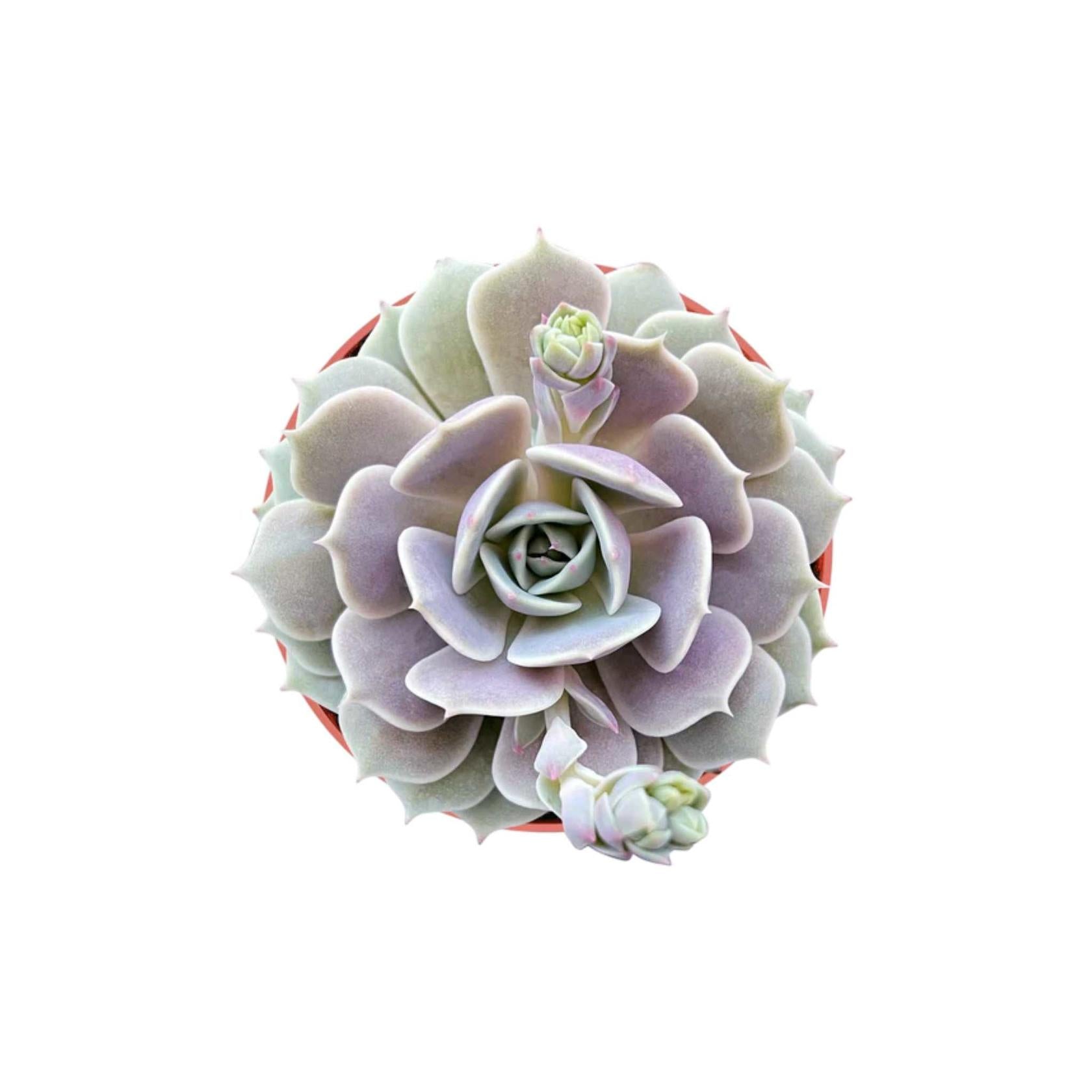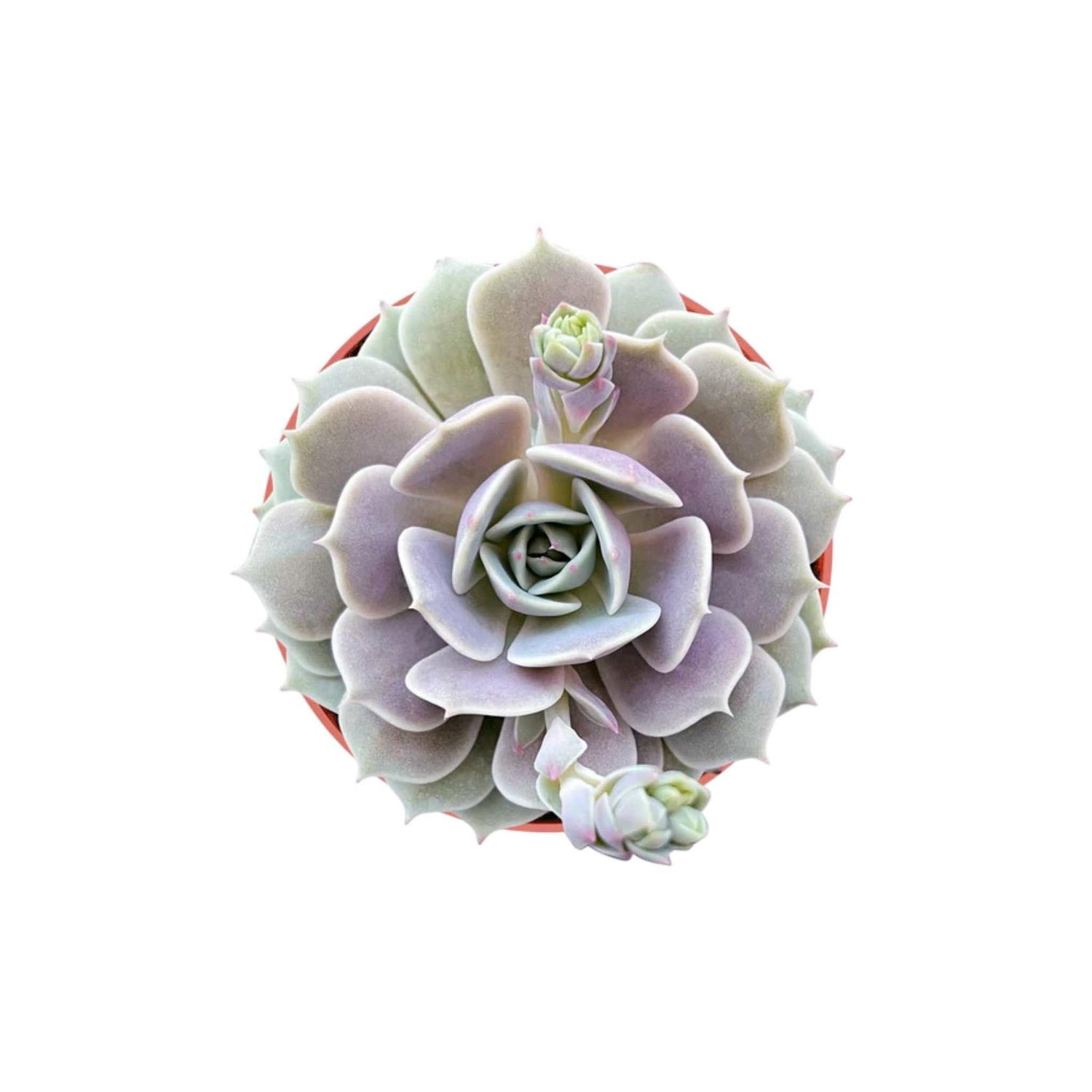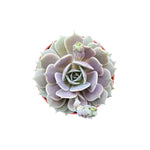
Echeveria Lola
$12.09
Unit price perEstimated delivery between 01 November and 03 November.
At Divine Root, we are committed to delivering healthy, high-quality indoor plants to our customers. While we do not accept returns due to the perishable nature of live plants, we offer a 30-day plant health guarantee and store credit for qualifying issues. Please read our Refund Policy carefully to understand how we handle concerns regarding plant health, shipping, and order

Echeveria Lola Care Guide & Presentation
Pet Safe
Yes
Water Needs
Low
Sunlight
Bright
Hardiness Zones
9-11
Temperature
60°F to 80°F
Suitable Space
Window, shelf, small pot
Humidity
Low
Plant Class
Echeveria
Plant Type
Succulent
Plant Characteristics
Rosette-forming
Genus
Echeveria
Fertilizing
Monthly
Re-potting
1-2 Years
Cleaning
As needed
Propagation
Offsets
Echeveria Lola: Overview
The Echeveria Lola is a hybrid succulent, created by crossing Echeveria lilacina and Echeveria derenbergii. Native to the dry regions of Mexico, this lola echeveria grows into a compact rosette that reaches about 4–6 inches tall and wide. Its appearance is one of its most striking features: tight rosettes with smooth, spoon-shaped leaves that show soft shades of lavender, pale pink, gray, and sometimes light green. A powdery coating called farina gives the plant a frosted, pastel look, making it appear almost like a delicate stone rose. Safe for pets and non-toxic, the lola succulent is a worry-free choice for homes with cats or dogs. During spring to early summer, it produces charming bell-shaped flowers in shades of pink, peach, or coral on slender stalks, adding even more beauty to its graceful form. Whether kept indoors or outdoors, the echeveria lola succulent is admired for its low-maintenance nature and year-round appeal.
Benefits
- Low-maintenance succulent, ideal for beginners.
- Purifies air while adding natural beauty to your space.
- Compact growth makes it great for desks, windowsills, and small containers.
- Drought-tolerant and thrives with minimal care.
- Produces charming blooms in spring and summer.
Care Guide
This lola succulent plant is hardy and simple to maintain. Follow these care steps to keep it healthy and beautiful:
Light and Water
- Light: Needs bright light or gentle direct sun for several hours a day to stay compact and colorful.
- Water: Water deeply only when the soil is fully dry. Avoid water sitting on the rosette.
Soil and Fertilization
- Soil: Best in a well-draining succulent or cactus mix with perlite or pumice.
- Fertilizer: Feed once a month in spring and summer with diluted succulent fertilizer.
Temperature and Humidity
- Temperature: Thrives between 65°F and 80°F. Keep safe from frost.
- Humidity: Prefers dry air with good airflow.
Pruning, Propagating, and Repotting
- Pruning: Remove old or damaged leaves from the base for a neat look.
- Propagating: Grows easily from offsets or leaf cuttings. Let cuttings callus before planting.
- Repotting: Repot every 2–3 years into fresh, fast-draining soil.
Common Problems
- Overwatering: Can lead to root rot. Always let soil dry completely before watering again.
- Stretching: Happens in low light. Move the plant to a brighter spot.
- Pests: Look out for mealybugs at the base of leaves. Clean gently with alcohol swabs if needed.
Best Location and Uses
- Looks lovely indoors on sunny windowsills, desks, and shelves.
- Perfect outdoors on patios or balconies in frost-free areas.
- Pairs well in mixed succulent arrangements and decorative pots.
- Great choice for rock gardens or drought-tolerant landscapes in warmer climates.


